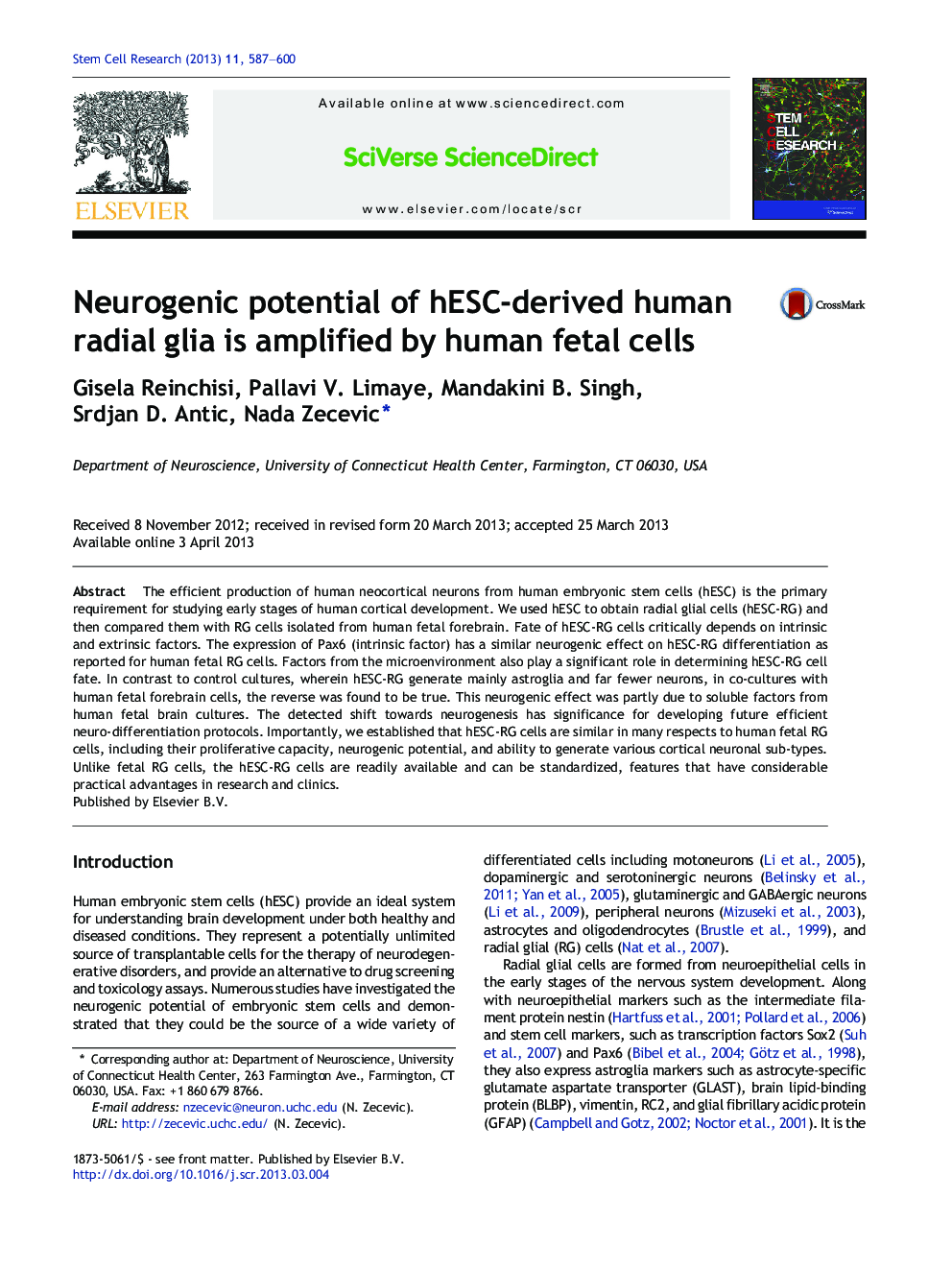| کد مقاله | کد نشریه | سال انتشار | مقاله انگلیسی | نسخه تمام متن |
|---|---|---|---|---|
| 10891257 | 1081996 | 2013 | 14 صفحه PDF | دانلود رایگان |
عنوان انگلیسی مقاله ISI
Neurogenic potential of hESC-derived human radial glia is amplified by human fetal cells
دانلود مقاله + سفارش ترجمه
دانلود مقاله ISI انگلیسی
رایگان برای ایرانیان
موضوعات مرتبط
علوم زیستی و بیوفناوری
بیوشیمی، ژنتیک و زیست شناسی مولکولی
بیوتکنولوژی یا زیستفناوری
پیش نمایش صفحه اول مقاله

چکیده انگلیسی
The efficient production of human neocortical neurons from human embryonic stem cells (hESC) is the primary requirement for studying early stages of human cortical development. We used hESC to obtain radial glial cells (hESC-RG) and then compared them with RG cells isolated from human fetal forebrain. Fate of hESC-RG cells critically depends on intrinsic and extrinsic factors. The expression of Pax6 (intrinsic factor) has a similar neurogenic effect on hESC-RG differentiation as reported for human fetal RG cells. Factors from the microenvironment also play a significant role in determining hESC-RG cell fate. In contrast to control cultures, wherein hESC-RG generate mainly astroglia and far fewer neurons, in co-cultures with human fetal forebrain cells, the reverse was found to be true. This neurogenic effect was partly due to soluble factors from human fetal brain cultures. The detected shift towards neurogenesis has significance for developing future efficient neuro-differentiation protocols. Importantly, we established that hESC-RG cells are similar in many respects to human fetal RG cells, including their proliferative capacity, neurogenic potential, and ability to generate various cortical neuronal sub-types. Unlike fetal RG cells, the hESC-RG cells are readily available and can be standardized, features that have considerable practical advantages in research and clinics.
ناشر
Database: Elsevier - ScienceDirect (ساینس دایرکت)
Journal: Stem Cell Research - Volume 11, Issue 1, July 2013, Pages 587-600
Journal: Stem Cell Research - Volume 11, Issue 1, July 2013, Pages 587-600
نویسندگان
Gisela Reinchisi, Pallavi V. Limaye, Mandakini B. Singh, Srdjan D. Antic, Nada Zecevic,